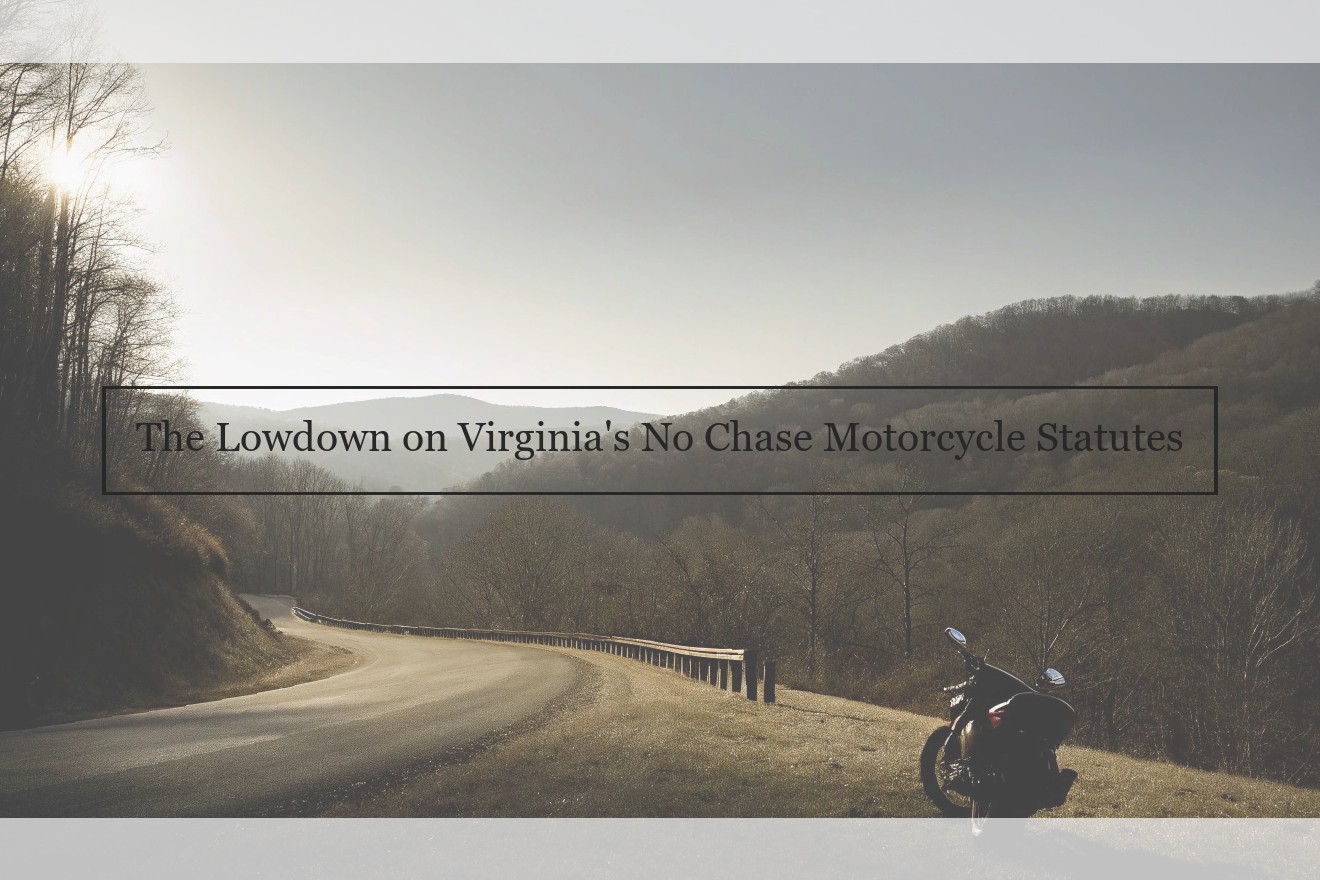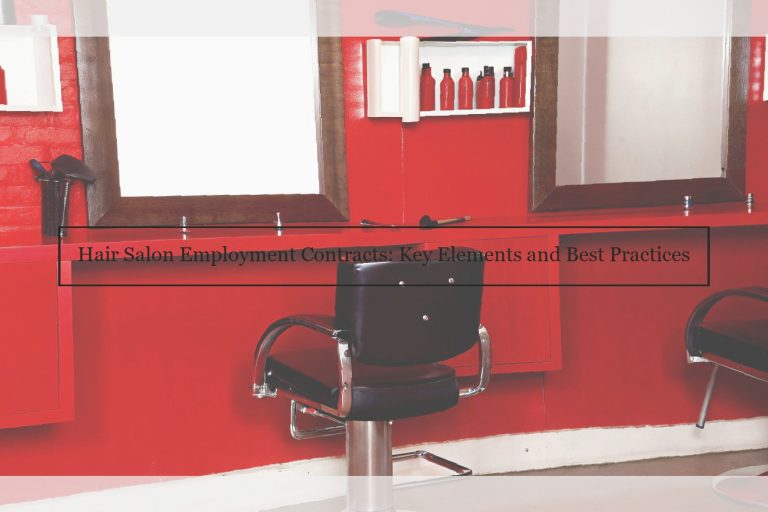Virginia and High-Speed Motorcycle Chases
The policy in Virginia concerning police chases of motorcycles is that the Virginia State Police generally will not chase after motorcycles for the simple reason that motorcycles provide little safety for the operator in a high-speed crash and passersby are at an increased risk of injury in a high-speed motorcycle pursuit; motorcyclists obviously have no steel and glass frame providing any protection between them and the pavement. While the manual does state that police officers are authorized to follow a motorcycle involving the commission of a capital murder or if deadly force was used by the motorcyclist , this is generally not the policy in practice today. The concern over collateral damage from unneeded high-speed chases generally outweighs the value of the life of the person fleeing the police officers. That being said, there are certainly specific circumstances which may dictate otherwise and ultimately the decision of whether to give pursuit is one left with the discretion of the officer.
What Constitutes a No Chase Law?
A no chase law is a legal measure that prohibits law enforcement from pursuing a suspect in a vehicle. In Virginia, there is a specific no chase law for motorcycles, meaning law enforcement officers are discouraged from pursuing a runaway motorcycle operator. Law enforcement may not engage in a high-speed pursuit with an operator of a motorcycle unless they have reasonable suspicion that the motorcycle is being operated by a person who has previously been convicted of driving while intoxicated or as a habitual offender, vanity plate offenders excepted. However, it is up to the police officer’s discretion on whether or not to engage in pursuit.
The purpose of no chase laws like Virginia’s motorcycle no chase law is to prevent unnecessary risks to public safety in the event of high-speed pursuits. High-speed pursuits frequently result in crashes and wrongful deaths. Innocent people are often seriously injured or killed. Additionally, criminals who have been found guilty of serious crimes are sometimes incarcerated for longer than they would have been if their crimes had not been discovered as a result of a high-speed police pursuit. Further, high-speed pursuits can put innocent children and bystanders in harm’s way and often cause damage to public property.
For these reasons, many U.S. states have adopted no chase laws since the 1980s. Virginia has joined this trend by criminalizing high-speed motorcycle chases.
No Chase Policies and Laws in Your State
Virginia currently does not have specific legislation regarding no chase policies for motorcycles. However, law enforcement agencies in Virginia are generally guided by risk assessment and training when considering what situations a motorcycle pursuit should be allowed.
The Virginia Association of Chiefs of Police and Sheriffs (VACOP) has published a model policy on pursuits regarding all motor vehicles. The model states in justifying the decision to pursue a vehicle, officers must do so with due regard to the safety of all persons involved. Considerations regarding the safety of a pursuit include: traffic conditions including road conditions, weather, and visibility; the location of the incident; the number of persons on the roadway; the time of day; and any other relevant circumstances the officer might face during the pursuit.
They also recommend that the policy delineate specific guidance officers should be given regarding the threat that a fleeing vehicle represents to the public being so significant that it could cause the agency to lose control of an ongoing pursuit if the threat is allowed to continue, and a rider on a motorcycle poses the same threat to the public as a driver of a motor vehicle.
In addition, Virginia Code § 19.2-9.2 states:
"Suspicion is not probable cause and a police officer may not chase or attempt to detain (…) a suspect based solely on such suspicion. The fleeing suspect cannot be arrested or charged with any crime when the sole basis for arrest or charge is that the officer had a reasonable suspicion about the suspect’s involvement in a possible crime."
While the law requires a "reasonable suspicion" before a pursuit may begin, once a pursuit starts, and for as long as the pursuit continues, the officer must have enough information to create a "reasonable belief" that the fleeing individual has committed a criminal offense. The police may not request pursuit assistance from surrounding jurisdictions after the initial pursuit is underway unless there is evidence that the person being pursued has committed a violent felony.
Virginia does not have any specific statutory no chase provisions for motorcycles, however, specific requirements and recommendations for high speed chases are recommended by VACOP.
Arguments For and Against No Chase Statutes
Benefits of a no chase policy often include reducing the risk of injury or death to the fleeing suspect and those of others in the general area. If the suspect is armed and dangerous, the risk of harm to the police officer is also drastically reduced. Not only is there less chance of injury to the suspect, the police car, and the other drivers on the roadway due to the nature of motorcycle chases, but the policy is also cost-effective in regards to money and resource demands on an agency. No high-speed chases means no more speeding, accident, and damage payments, overtime and road clean-up costs or possible personnel costs related to lawsuits filed for injuries to innocent third parties or injury to the police officer.
Furthermore, law enforcement officers cite the safety of the public as a primary argument in favor of no chase laws. Those who argue against no chase policies often endorse putting public safety above those of the suspect, and believe that the actual situation on the ground can be better evaluated in the context. Authorities in favor of no chase policies often put emphasis on the fact that most motorcycle listeners do not flee. As such, they argue that most instances in which no chase laws would be invoked are related to more serious motorcycle crimes where the risk of a chase is less than the eased burden on criminal investigations. Police are not bound by a no chase policy in Virginia, and police pursues on motorcycles are rare and usually limited to those who have committed serious and violent crimes.
Comparing Virginia’s Policy to Others
Virginia is not alone in implementing policies governing high-speed chases. Many other states have also enacted similar measures to protect localities from the dangers of these hazardous police pursuits. Whether or not a state has a no chase law for motorcycles, its pursuit policies are similar to those in Virginia in that they are strictly enforced by the local police enforcement agencies.
However, some other states, such as Hawaii, do not implement a no chase law for motorcycles and have no specific pursuit policy regarding motorcycle chases. It is up to the chief of police to decide whether the motorcycle chase is warranted or not . These states leave the decision to chase vehicles entirely up to the discretion of the police officers in locales throughout the state.
Examples of states that have similar policies to Virginia are:
A visualization of why each of the "DO NOT CHASE" states have the policy they do can be seen in the image below. Essentially, all states that DO NOT CHASE have severe terrain that makes motorcycle chases incredibly dangerous.
As you can see below, the "DO NOT CHASE" states are often mountainous regions with significant valleys and other hard corners. This makes the chance of injury to an innocent motorist very high.
Effects on Road Safety and Motorcyclists’ Welfare
Potentially producing unintended consequences, the no chase law when applied to motorcycles is likely to reduce overall motor vehicle safety. For example, studies show that the vast majority of motor vehicle pursuits are initiated by the police following a traffic infraction. In Virginia, it is estimated that nearly 90% of all motor vehicle pursuits are initiated for minor traffic infractions. Simple common sense tells us that when a police officer indefinitely terminates the pursuit of a motorcycle for a minor traffic infraction, the effect will be a motivation for the offending motorcycle operator to accelerate away from the police which will, needless to say, produce more speed, more driving maneuvers on the motorcycle and, thus, more likelihood of an accident, death or serious injury.
According to recent statistics, motorcycle fatalities from 2019 to 2021 actually increased despite the pandemic, which shut things down for a time. The total number of motorcycle fatalities in Virginia in 2020 was 53. Now, this is a huge increase from 2019, which counted 41, and another increase from 2021, which revealed 51 motorcycle fatalities.
A 2017 study by the National Highway Traffic Safety Administration (NHTSA) showed that approximately 25% of fatal motorcycle crashes also involved a high-speed police pursuit. NHTSA does not explain the reason why motorcycle accidents are more violent and often times more deadly for those motorcycle riders than other cars involved in a police pursuit. It stands to reason, however, that since motorcycles lack structural protection (such as a steel chassis and crumple zones), these also lack the type of protective features that are found in cars. An unprotected motorcyclist’s body will strike almost the complete outside of the car during a collision, resulting in needless loss of life.
The International Association of Chiefs of Police addresses the most common dangers associated with police pursuits of motorcycles according to the 2008 publication "The Guidelines for Pursuits involving Motorcycles." These concerns include (1) a greater risk of serious injury for motorcycle officers involved in motorcycle pursuits; (2) the chance of losing sight of the motorcycle and losing information as to the velocity and direction of travel; (3) the inability for officers to use video or photographic evidence after the fact to verify the lawfulness of the initial stop or the need to pursue; (4) the added hazards of nighttime pursuits of motorcycles not equipped with functional headlights and taillights, or without reflective paint or tape; (5) the loss of radio communication if the motorcycle is stopped on an overpass or ramp; (6) a reduced ability to give a thorough account of the events which do not involve the officer; (7) the tendency by motorcyclists to conceal their license plates; and (8) the potential risk of motorcycle riders fleeing on exhaust temperature, exhaust vapor clouds or the smell of hot brake pads, tires or asphalt.
Public Perception and Legal Controversy
The debate over no chase laws in Virginia is not purely legal. Public opinion has been deeply predictive of legal action in cases like the no high-speed pursuit policy for police in Virginia Beach that Schneider fought until it was abolished. A 2021 poll saw overwhelming support for a no chase policy among 87% of respondents saying the city should not chase motorcycles if the motorcyclist was without gear. The attorney fought for the policy in the wake of a 2019 motorcycle accident claiming the life of an aspiring journalist. "There were nine deaths on motorcycles due to high speed police pursuits this past year, and none of them was wearing their helmet or protective equipment , " said Schneider to the Washington Times in 2019. "Take the high-speed chases off the table if you don’t wear your helmet. We did that for the police department." Virginia does not currently have a hunting regulation like those seen in Florida or Arizona, but Schneider himself is working towards greater legislation through the representation of two victims of motorcycle accidents that he believes could have been avoided had there been a no chase law. In the meantime, public awareness is still necessary to prevent illegal policing and high-speed accidents like those Schneider has fought against with significant success.



+ There are no comments
Add yours